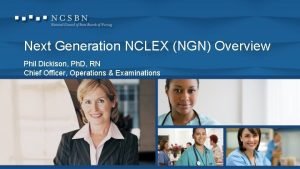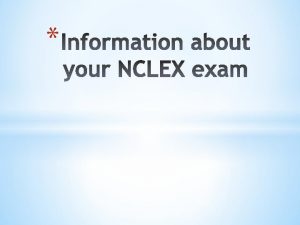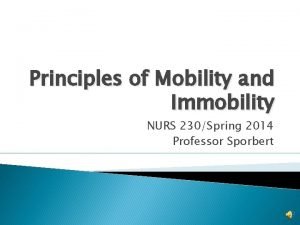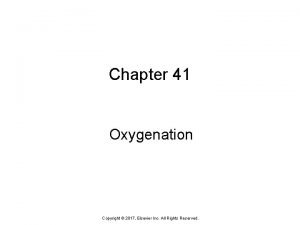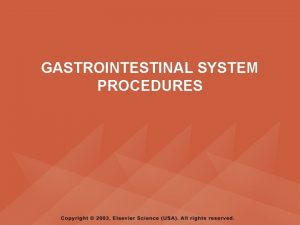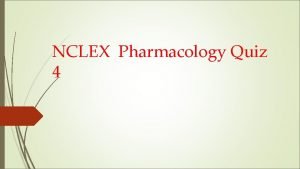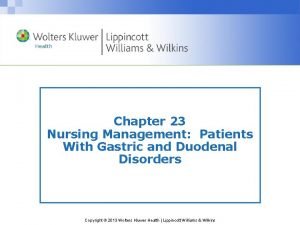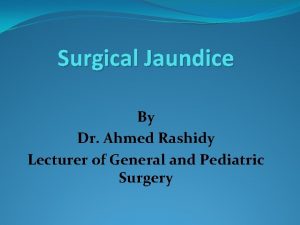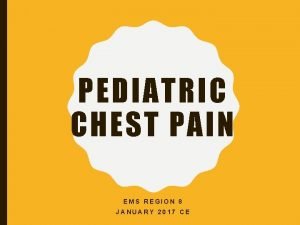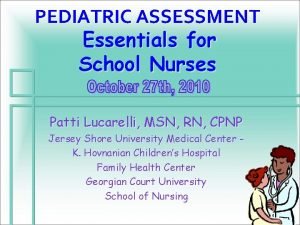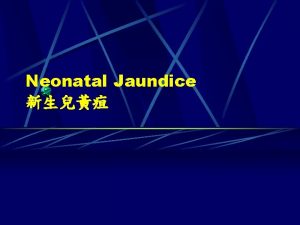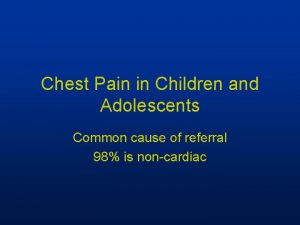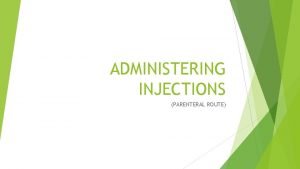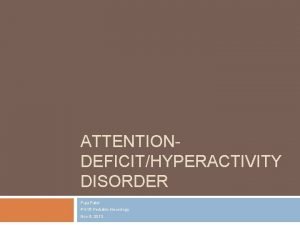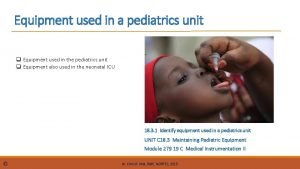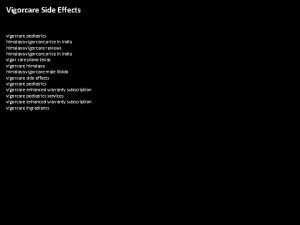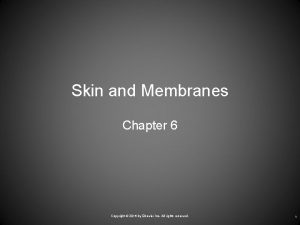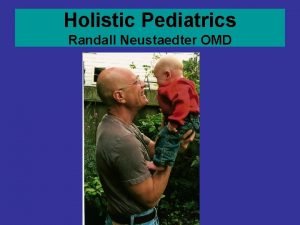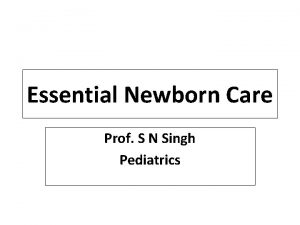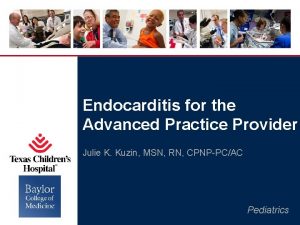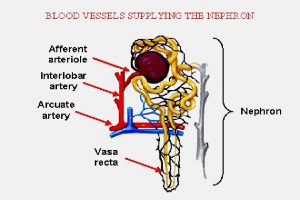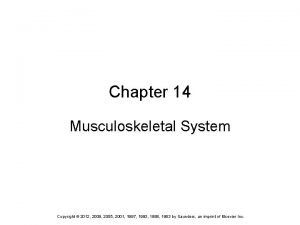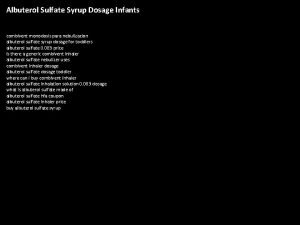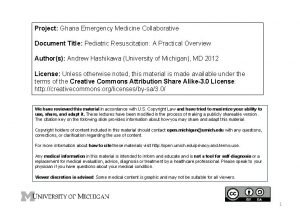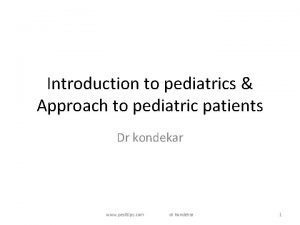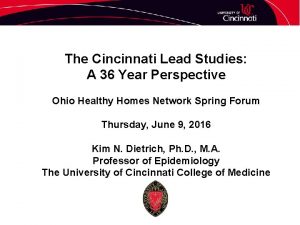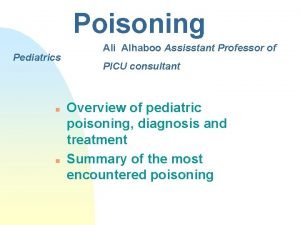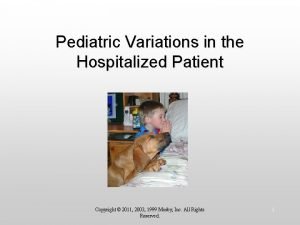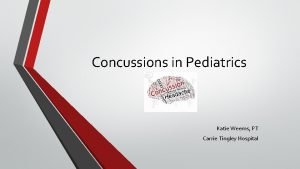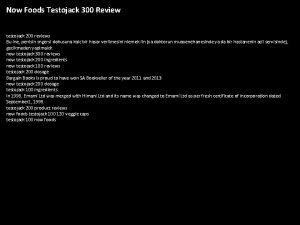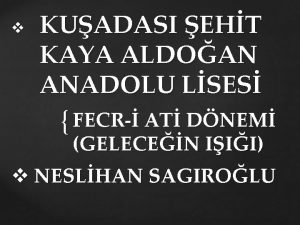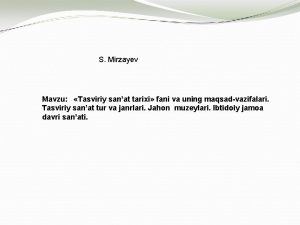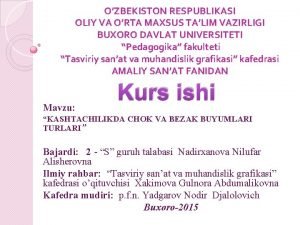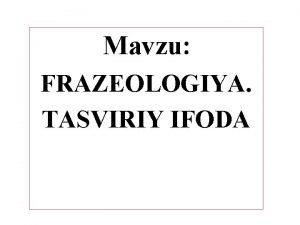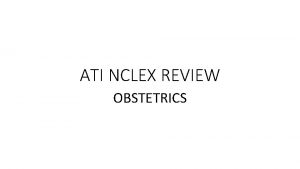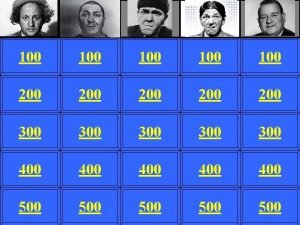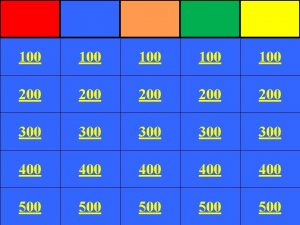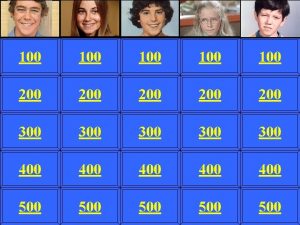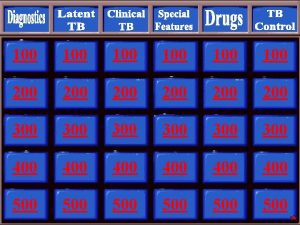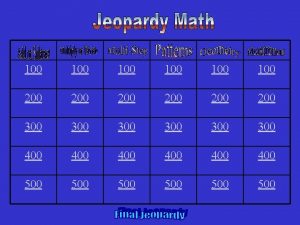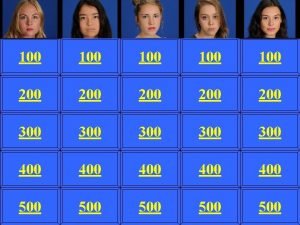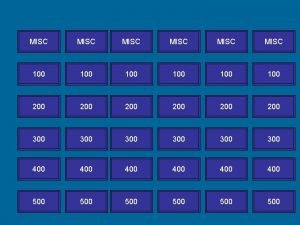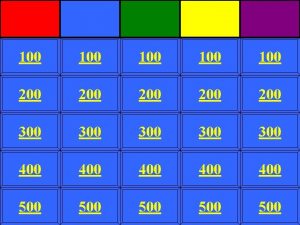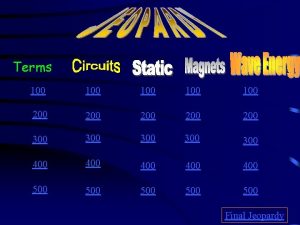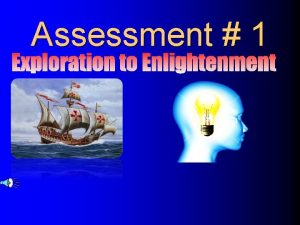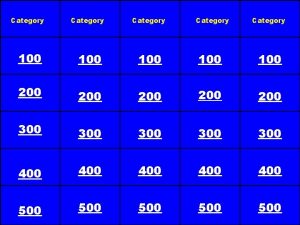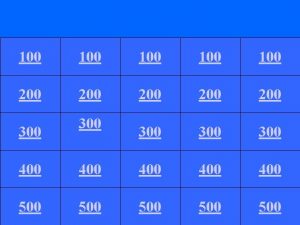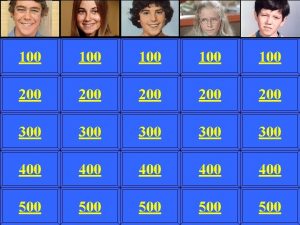ATI NCLEX REVIEW PEDIATRICS 100 100 100 200






























































- Slides: 62

ATI NCLEX REVIEW PEDIATRICS

100 100 100 200 200 200 300 300 300 400 400 400 500 500 500 600 600 600

A nurse is assessing a 6 -month-old infant. Which of the following reflexes should the infant exhibit? A. Moro B. Plantar grasp C. Stepping D. Tonic neck ANSWER

A. INCORRECT: The moro reflex is exhibited by infants from birth to the age of 4 months. B. CORRECT: The plantar grasp is exhibited by infants from birth to the age of 8 months. C. INCORRECT: The stepping reflex is exhibited by infants from birth to the age of 4 weeks. D. INCORRECT: The tonic neck reflex is exhibited by infants from birth to the age of 3 to 4 months

A parent of a school-age child with GH deficiency asks the nurse how long his son will need to take injections for his growth delay. Which of the following is an appropriate response by the nurse? A. “Injections are usually continued until age 10 for girls and age 12 for boys. ” B. “Injections continue until your child reaches the fifth percentile on the growth chart. ” C. “Injections should be continued until there is evidence of epiphyseal closure. ” D. “The injections will need to be administered throughout your child’s entire life. ” ANSWER

A. INCORRECT: Injections are continued until there is evidence of epiphyseal closure; age will be variable among clients. B. INCORRECT: Injections are continued until there is evidence of epiphyseal closure; growth will be variable among clients. C. CORRECT: Injections are continued until there is evidence of epiphyseal closure on radiographic tests. D. INCORRECT: Injections are continued until there is evidence of epiphyseal closure; age will be variable among clients.

A nurse is conducting a well-baby visit with a 4 -monthold infant. Which of the following immunizations should the nurse administer to the infant? (Select all that apply. ) A. Measles, mumps, rubella (MMR) B. Polio (IPV) C. Pneumococcal vaccine (PCV) D. Varicella E. Rotavirus vaccine (RV) ANSWER

A. INCORRECT: The first MMR vaccine is given between the ages of 12 and 15 months. B. CORRECT: The nurse should administer an IPV vaccine to a 4 -month-old infant. C. CORRECT: The nurse should administer a PCV vaccine to a 4 month-old infant. D. INCORRECT: The first varicella vaccine is given at a minimum age of 12 months. E. CORRECT: The nurse should administer an RV vaccine to a 4 -month-old infant.

A nurse is caring for a preschool-age child who says she needs to leave the hospital because her doll is scared to be at home alone. Which of the following characteristics of preoperational thought is the child exhibiting? A. Egocentrism B. Centration C. Animism D. Magical thinking ANSWER

A. INCORRECT: Egocentrism occurs when the child is unable to see another person’s perspective. B. INCORRECT: Centration occurs when the child focuses on one aspect of something instead of considering the whole. C. CORRECT: Animism occurs when the child gives living qualities to inanimate objects, such as a doll feeling scared. D. INCORRECT: Magical thinking occurs when the child believes their thoughts cause an event to occur.

A nurse is providing teaching about expected changes during puberty to a group of parents of early adolescent girls. Which of the following statements by one of the parents indicates an understanding of the teaching? A. “Girls usually stop growing about 2 years after menarche. ” B. “Girls are expected to gain about 65 pounds during puberty. ” C. “Girls experience menstruation prior to breast development. ” D. “Girls typically grow more than 10 inches during puberty. ” ANSWER

A. CORRECT: Girls usually stop growing about 2 years after menarche. This statement by the parent indicates and understanding of the teaching. B. INCORRECT: Girls are expected to gain 7 to 25 kg (15. 5 to 55 lb) during puberty. This statement by the parent does not indicate an understanding of the teaching. C. INCORRECT: Breast development is usually the first manifestation of sexual maturity in girls, and appears before menstruation. This statement by the parent does not indicate an understanding of the teaching. D. INCORRECT: Girls typically grow 5 to 20 cm (2 to 8 in) during puberty. This statement by the parent does not indicate an understanding of the teaching.

A nurse is preparing to administer an intramuscular (IM) injection to a child. Which of the following muscle groups is contraindicated? A. Deltoid B. Ventrogluteal C. Vastus lateralis D. Dorsal gluteal ANSWER

A. INCORRECT: The deltoid muscle can be used once developed for IM injections in children for medication containing up to 1 m. L of fluid. B. INCORRECT: The ventrogluteal muscle can be used for IM injections in children for medication containing up to 2 m. L of fluid. C. INCORRECT: The vastus lateralis muscle can be used for intramuscular injections in children for medication containing up to 2 m. L of fluid. D. CORRECT: The dorsal gluteal site has major nerves and blood vessels and is not a recommended site for IM injections for children.

A nurse is preparing a toddler for an intravenous catheter insertion using atraumatic care. Which of the following are appropriate interventions? (Select all that apply. ) A. Explain the procedure using the child’s favorite toy. B. Ask the parents to leave during the procedure. C. Perform the procedure with the child in his bed. D. Allow the child to make one choice regarding the procedure. E. Apply EMLA cream to three potential insertion sites. ANSWER

A. CORRECT: Explaining the procedure using the child’s favorite toy can assist the child to manage fears and provides atraumatic care. B. INCORRECT: The parents should be allowed to remain for procedures to offer comfort to the child. C. INCORRECT: Safe places such as the child’s bed should be avoided. D. CORRECT: Allowing the child to make choices offers a sense of control over the situation and should be used to provide atraumatic care. E. CORRECT: A topical analgesic, such as EMLA, decreases pain and should be used to provide atraumatic care.

A nurse is caring for a child. Which of the following are physical manifestations of impending death? (Select all that apply. ) A. Heightened sense of hearing B. Tachycardia C. Difficulty swallowing D. Sensation of being cold E. Cheyne-Stokes respirations ANSWER

A. INCORRECT: A decrease in the senses of smell, sight, and hearing are physical manifestations of approaching death. B. INCORRECT: Bradycardia is a physical manifestation of approaching death. C. CORRECT: Difficulty swallowing is a physical finding of approaching death. D. INCORRECT: A client’s sensation of heat when the body feels cool is a physical manifestation of approaching death. E. CORRECT: Cheyne-Stokes respirations are an abnormal breathing pattern with periods of apnea that is a physical finding of impending death

A nurse is caring for a client who has suspected meningitis and a decreased level of consciousness. Which of the following actions by the nurse is appropriate? A. Place the client on NPO status. B. Prepare the client for a liver biopsy. C. Position the client dorsal recumbent. D. Put the client in a protective environment ANSWER

A. CORRECT: Due to the client’s decreased level of consciousness, placing the client on NPO status is an appropriate action by the nurse. B. INCORRECT: This is not an appropriate action by the nurse. Liver biopsies are used to diagnose Reye syndrome. C. INCORRECT: This is not an appropriate action by the nurse. Position the client without a pillow and slightly elevate the head of the bed. D. INCORRECT: This is not an appropriate action by the nurse. Clients who have undergone allogeneic hematopoietic stem cell transplants are put in protective environments. This client should be placed on droplet precautions.

A nurse is reviewing cerebrospinal fluid analysis for a client who has suspected meningitis. Which of the following results indicate viral meningitis? (Select all that apply. ) A. Negative gram stain B. Normal glucose content C. Cloudy color D. Decreased WBC count E. Normal protein content ANSWER

A. CORRECT: A negative gram stain indicates viral meningitis. B. CORRECT: Normal glucose content indicates viral meningitis. C. INCORRECT: A clear color indicates viral meningitis. D. INCORRECT: A slightly elevated WBC count indicates viral meningitis. E. CORRECT: Normal protein content indicates viral meningitis

A nurse is caring for a school-age client who possibly has Reye syndrome. Which of the following is a risk factor for developing Reye syndrome? A. Recent history of infectious cystitis caused by Candida B. Recent history of bacterial otitis media C. Recent episode of gastroenteritis D. Recent episode of Haemophilus influenzae meningitis ANSWER

A. INCORRECT: A recent history of infectious cystitis caused by Candida, a fungal infection, is not a risk factor for Reye syndrome. B. INCORRECT: A recent history of bacterial otitis media is not a risk factor for Reye syndrome. C. CORRECT: A recent episode of gastroenteritis, a viral illness, is a risk factor for Reye syndrome typically follows a viral illness, such as influenza, gastroenteritis, or varicella. D. INCORRECT: A recent episode of Haemophilus influenzae meningitis, a bacterial infection, is not a risk factor for Reye syndrome.

A nurse is teaching a group of parents about the risk factors for seizures. Which of the following should be included in the teaching? (Select all that apply. ) A. Febrile episodes B. Hypoglycemia C. Sodium imbalances D. Low serum lead levels E. Presence of diphtheria ANSWER

A. CORRECT: Febrile episodes can cause general tonic-clonic seizures in infants and young children. B. CORRECT: Seizure activity is a late manifestation of hypoglycemia. C. CORRECT: Seizure activity is a manifestation of hyponatremia and hypernatremia. D. INCORRECT: High serum lead levels is a risk factor for seizure activity. E. INCORRECT: Diphtheria is a respiratory illness causing difficulty breathing and is not a risk factor for seizures.

A nurse is reviewing treatment options with the parent of a child who has worsening seizures. Which of the following should be included in the discussion? (Select all that apply. ) A. Vagal nerve stimulator B. Additional antiepileptic medications C. Corpus callosotomy D. Focal resection E. Radiation therapy ANSWER

A. CORRECT: The implantation of a vagal nerve stimulator is an option to provide seizure control. B. CORRECT: Additional antiepileptic medication can be added to the current medication regime to control seizures. C. CORRECT: A corpus callosotomy can be performed for uncontrolled seizures. D. CORRECT: A focal resection can be performed for uncontrolled seizures. E. INCORRECT: Radiation therapy is used in cancer treatment and is not used to control seizures.

A nurse is caring for a child who was admitted to the emergency department after a motor-vehicle crash. The child is unresponsive, has spontaneous respirations of 22/min, and has a laceration on the forehead that is bleeding. Which of the following is the priority nursing action at this time? A. Keep the neck stabilized. B. Insert a nasogastric tube. C. Obtain vital signs. D. Establish IV access ANSWER

A. CORRECT: The greatest risk to a child following a motor vehicle crash is cervical injury. Therefore, keeping the neck stabilized until cervical injury can be ruled out is the priority action. B. INCORRECT: Inserting a nasogastric tube in is important. However, this is not the priority action. C. INCORRECT: Obtaining vital signs is important. However, this is not the priority action. D. INCORRECT: Establishing IV access is important. However, this is not the priority action

A nurse is caring for a child who has increased intracranial pressure. Which of the following are appropriate actions by the nurse? (Select all that apply. ) A. Suction the endotracheal tube every 2 hr. B. Maintain a quiet environment. C. Use two pillows to elevate the head. D. Administer a stool softener. E. Maintain body alignment. ANSWER

A. INCORRECT: Routine suctioning of the endotracheal tube is poorly tolerated, not recommended, and raises intracranial pressure. B. CORRECT: Stimulation cause increased intracranial pressure, and maintaining a quiet environment is an appropriate action for the nurse to take. C. INCORRECT: Pillows under the head cause flexion of the neck and increase intracranial pressure. D. CORRECT: Increased pressure in the abdomen with the Valsalva maneuver can increase intracranial pressure. Administering a stool softener is an appropriate action by the nurse. E. CORRECT: Flexion and extension of the neck or hips increase intracranial pressure. Therefore, maintaining body alignment is an appropriate action by the nurse.

A nurse is teaching a parent about dexamethasone (Decadron) to treat head injury. Which of the following should be included in the teaching? A. “It decreases cerebral edema. ” B. “It promotes control of seizures. ” C. “It promotes improved pain management. ” D. “It is used to treat an infection. ” ANSWER

A. CORRECT: Dexamethasone is a corticosteroid and is used to decrease cerebral edema associated with a head injury. B. INCORRECT: Antiepileptics control seizures. C. INCORRECT: Analgesics are used for pain management. D. INCORRECT: Antibiotics treat infections.

A nurse is completing a physical assessment of a child with suspected glaucoma. Which of the following findings confirm this diagnosis? (Select all that apply. ) A. Epiphora B. Absent red reflex C. Strabismus D. Blepharospasm E. Report of pain ANSWER

A. CORRECT: Epiphora is a clinical manifestation of glaucoma. B. INCORRECT: Absent red reflex is a clinical manifestation of a cataract. C. INCORRECT: Strabismus is a clinical manifestation of a cataract. D. CORRECT: Blepharospasm is a clinical manifestation of glaucoma. E. CORRECT: Report of pain is a clinical manifestation of glaucoma

A nurse caring for a child who is receiving oxygen therapy and is on a continuous oxygen saturation monitor that is reading 89%. Which of the following is the priority action for the nurse to take? A. Increase the oxygen flow rate. B. Encourage the child to take deep breaths. C. Ensure proper placement of the sensor probe. D. Place the child in the Fowler’s position ANSWER

A. INCORRECT: Increasing the oxygen flow rate for a child who has an oxygen saturation of 89% is important, but this is not the priority action. B. INCORRECT: Encouraging the child to take deep breaths to increase oxygenation is important, but this is not the priority action. C. CORRECT: The first action the nurse should take using the nursing process approach is to assess. Ensuring the sensor probe is properly placed is the priority action. D. INCORRECT: Placing the child in Fowler’s position to increase oxygenation is important, but this is not the priority action

A nurse is caring for a child who is in the postoperative period following a tonsillectomy. Which of the following is a clinical finding of postoperative bleeding? A. Hgb of 11. 6 and Hct of 37% B. Inflamed and reddened throat C. Frequent swallowing and clearing of the throat D. Blood-tinged mucus ANSWER

A. INCORRECT: A Hgb of 11. 6 and Hct of 37% are within the expected reference range. B. INCORRECT: Inflamed and reddened throat is an expected finding following a tonsillectomy. C. CORRECT: Frequent swallowing and clearing of the throat indicates that there is an increased amount of fluid in the back of the throat, which is a clinical finding in the client who is experiencing postoperative bleeding. D. INCORRECT: Blood-tinged mucus is an expected finding following a tonsillectomy.

A nurse is assessing a child. Which of the following are clinical manifestations of epiglottitis? (Select all that apply. ) A. Hoarseness and difficulty speaking B. Difficulty swallowing C. Low-grade fever D. Drooling E. Dry, barking cough F. Stridor ANSWER

A. CORRECT: Hoarseness and difficulty speaking is a clinical manifestation of epiglottitis. B. CORRECT: Difficulty swallowing is a clinical manifestation of epiglottitis. C. INCORRECT: A high fever is a clinical manifestation of epiglottitis. D. CORRECT: Drooling is a clinical manifestation of epiglottitis. E. INCORRECT: Dry, barking cough is a clinical manifestation of croup. F. CORRECT: Stridor is a clinical manifestation of epiglottitis

A nurse is teaching an adolescent about the appropriate use of his asthma medications. Which of the following should the client be instructed to take as needed before exercise? A. Fluticasone/salmeterol (Advair) B. Montelukast (Singulair) C. Prednisone (Deltasone) D. Albuterol (Proventil) ANSWER

A. INCORRECT: Fluticasone/salmeterol (Advair) is a combination medication used for maintenance control of asthma. B. INCORRECT: Montelukast (Singulair) is a medication used for maintenance control of asthma. C. INCORRECT: Prednisone (Deltasone) is a medication used for exacerbations of asthma. D. CORRECT: Albuterol is a beta 2 -agonist used for bronchodilation and should be administered prior to exercise.

A nurse is preparing to administer tobramycin 100 mg via intermittent IV bolus. Available is tobramycin 100 mg in 0. 9% sodium chloride 100 m. L. The nurse is planning to administer the medication over 30 min. The nurse should set the pump to deliver how many milliliters per hour? (Round the answer to the nearest whole number. ) ANSWER

Step 1: What is the unit of measurement to calculate? m. L/hr Step 2: What is the volume needed? Volume needed = Volume 100 m. L Step 3: What is the total infusion time? Time available = Time 30 min Step 4: Should the nurse convert the units of measurement? Yes (min ≠ hr) 60 min 1 hr 30 min X hr = X = 0. 5 Step 5: Set up an equation and solve for X. time (hr) volume (ml) = X 0. 5 hr 100 ml = X ml/hr 200 = X Step 6: Round if necessary. Step 7: Reassess to determine whether the IV flow rate makes sense. If the amount prescribed is 100 m. L to infuse over 30 min (0. 5 hr), it makes sense to administer 200 m. L/hr. The nurse should set the IV pump to deliver 100 mg in 0. 9% sodium chloride 100 m. L at 200 m. L/hr.

A nurse is caring for a child who is suspected of having cystic fibrosis. Which of the following tests should the nurse prepare to administer to confirm this diagnosis? A. Sweat chloride B. Pulmonary function test C. Arterial blood gases D. Chest percussion ANSWER

A. CORRECT: Children who have cystic fibrosis excrete an abnormal amount of sodium and chloride in their sweat. Therefore, a sweat chloride test is diagnostic of cystic fibrosis and should be performed. B. INCORRECT: Pulmonary function tests evaluate lung function and are used for children who have cystic fibrosis. However, they are not diagnostic of the disease. C. INCORRECT: Arterial blood gases are used for children who have cystic fibrosis to determine oxygenation status. However, they are not diagnostic of the disease. D. INCORRECT: Chest percussion is used for children who have cystic fibrosis to assist with expectoration of mucus from their lungs, but it is not diagnostic of the disease.

A nurse is admitting a child who has cystic fibrosis. Which of the following medications should the nurse anticipate including in the plan of care? (Select all that apply. ) A. Tobramycin B. Solu-medrol C. Fat-soluble vitamins D. Albuterol E. Dornase alfa ANSWER

A. CORRECT: Children who have cystic fibrosis have pulmonary infections. Therefore, administering antibiotics should be part of the plan of care. B. INCORRECT: Corticosteroid use has been associated with short stature, glucose intolerance, and cataracts, and should not be part of the plan of care. C. CORRECT: Children who have cystic fibrosis have difficulty absorbing fat. Therefore, supplementation of the fat-soluble vitamins should be part of the plan of care. D. CORRECT: Children who have cystic fibrosis have mucus plugs. Therefore, administering a bronchodilator should be part of the plan of care. E. CORRECT: Children who have cystic fibrosis have mucus plugs. Therefore, administering dornase alfa, which decreases the viscosity of the mucus, should be part of the plan of care

A nurse is planning care for a child who has cystic fibrosis. Which of the following interventions should she include in the plan of care? A. Provide a low-calorie, low-protein diet. B. Administer pancreatic enzymes with meals and snacks. C. Promote an increase in fluids after 1800. D. Restrict physical activity. ANSWER

A. INCORRECT: Children who have cystic fibrosis should eat a high-calorie, high-protein diet to allow for proper growth. B. CORRECT: Children who have cystic fibrosis have pancreatic insufficiency. Therefore, administering pancreatic enzymes with meals and snacks should be part of the plan of care. C. INCORRECT: Children who have cystic fibrosis should increase fluids throughout the day to assist in thinning thick mucus. D. INCORRECT: Children who have cystic fibrosis should engage in daily activity to assist with lung expansion and stimulate mucus excretion.

A nurse is caring for an infant. Which of the following are clinical manifestations of coarctation of the aorta? (Select all that apply. ) A. Weak femoral pulses B. Cool skin of lower extremities C. Severe cyanosis D. Clubbing of the fingers E. Heart failure ANSWER

A. CORRECT: Narrowing of the lumen of the aorta results in obstruction of blood flow from the ventricle, resulting in weak or absent femoral pulses. B. CORRECT: Narrowing of the lumen of the aorta results in obstruction of blood flow from the ventricle, resulting in cool skin of the lower extremities. C. INCORRECT: A client who has coarctation of the aorta exhibits adequate oxygenation of blood. Therefore, severe cyanosis is not present. D. INCORRECT: Clubbing of the fingers is a clinical manifestation of chronic hypoxemia and will not be observed in an infant who has coarctation of the aorta. E. CORRECT: Heart failure occurs when the heart is unable to meet the body’s demands, and is a clinical manifestation of coarctation of the aorta.

A nurse is caring for a 2 -year-old child who is cyanotic and is in the hospital for a cardiac catheterization to repair cardiac defects. The child will be transferred to the pediatric ICU following the procedure. Which of the following is an appropriate nursing action when providing care to this child? A. Place on NPO status for 12 hr prior to the procedure. B. Check for iodine or shellfish allergies prior to the procedure. C. Elevate the affected extremity following the procedure. D. Limit fluid intake following the procedure ANSWER

A. INCORRECT: The child should remain NPO 4 to 6 hr prior to the procedure. B. CORRECT: Iodine-based dyes may be used in this procedure, so the child is assessed for allergies to iodine or shellfish which could lead to anaphylaxis. C. INCORRECT: The affected extremity should be maintained in a straight position following the procedure. D. INCORRECT: Fluids should be encouraged after the procedure to maintain adequate urine output and promote excretion of the dye.

A nurse is caring for a child who is suspected of having rheumatic fever. Which of the following manifestations support this diagnosis? (Select all that apply. ) A. Erythema marginatum (rash) B. Continuous joint pain of the digits C. Tender, subcutaneous nodules D. Decreased erythrocyte sedimentation rate E. Elevated C-reactive protein ANSWER

A. CORRECT: Rheumatic fever is caused by Group A β-hemolytic streptococcus. An erythema marginatum (rash) is a clinical manifestation. B. INCORRECT: A client who has rheumatic fever exhibits migratory joint pain of the large joints. C. INCORRECT: A client who has rheumatic fever exhibits nontender subcutaneous nodules of bony prominences. D. INCORRECT: Rheumatic fever is caused by Group A β-hemolytic streptococcus, which results in an elevated erythrocyte sedimentation rate. E. CORRECT: Rheumatic fever is caused by Group A β-hemolytic streptococcus. An increase in C-reactive protein is a clinical manifestation.

A nurse is preparing to administer iron dextran (Proferdex) IM to a school-age child who has iron deficiency anemia. Which of the following actions by the nurse is appropriate? A. Administer the dose in the deltoid muscle. B. Use the Z-track method when administering the dose. C. Avoid injecting more than 2 m. L with each dose. D. Massage the injection site for 1 min after administering the dose ANSWER

A. INCORRECT: The nurse should administer the dose in to a large muscle mass. B. CORRECT: The nurse should use the Z-track method when administering the dose. C. INCORRECT: The nurse should avoid injecting more than 1 m. L with each dose. D. INCORRECT: To reduce irritation and skin staining, the nurse should not massage the injection site after administering the dose

A nurse is caring for a child who has type 1 diabetes. Which of the following is a clinical manifestation of diabetic ketoacidosis? (Select all that apply. ) A. Blood glucose 58 mg/d. L B. Weight gain C. Dehydration D. Mental confusion E. Fruity breath ANSWER

A. INCORRECT: Diabetic ketoacidosis is classified as a blood glucose level greater than 300 mg/d. L. B. INCORRECT: Clients who have diabetic ketoacidosis display weight loss. C. CORRECT: Clients who have diabetic ketoacidosis experience osmotic diuresis because of the electrolyte shift. D. CORRECT: Clients who have diabetic ketoacidosis experience mental confusion because of the electrolyte shift. E. CORRECT: Clients who have diabetic ketoacidosis experience fruity breath because of the body’s attempt to eliminate ketones.
 200+200+100+100
200+200+100+100 100 100 100 100 100
100 100 100 100 100 Scientific notation
Scientific notation 100 200 300
100 200 300 100+100=200
100+100=200 100 200 300
100 200 300 300+200+200
300+200+200 200+200+300
200+200+300 Ncsbn clinical judgement model example
Ncsbn clinical judgement model example Next gen nclex
Next gen nclex Ncsbn stands for
Ncsbn stands for Nclex style questions examples
Nclex style questions examples What is immobility
What is immobility Chapter 41: oxygenation nclex questions
Chapter 41: oxygenation nclex questions Cantor tube
Cantor tube Idphnet.illinois.gov
Idphnet.illinois.gov Cloze items nclex
Cloze items nclex Blood transfusion steps nclex
Blood transfusion steps nclex Ibd nclex questions
Ibd nclex questions 200+400+600
200+400+600 Normal range for vital signs
Normal range for vital signs Respiratory rate normal range
Respiratory rate normal range Obstructive jaundice bilirubin
Obstructive jaundice bilirubin Mitten restraint procedure
Mitten restraint procedure 1 inch
1 inch Chest pain in pediatrics
Chest pain in pediatrics What are the 7 vital signs
What are the 7 vital signs Flacc scoring
Flacc scoring Neonatal jaundice physical examination
Neonatal jaundice physical examination Define modern concept of child care
Define modern concept of child care Modern concept of child health care
Modern concept of child health care Neuro shelf exam percentiles
Neuro shelf exam percentiles Chest pain in pediatrics
Chest pain in pediatrics New river valley pediatrics
New river valley pediatrics Im injection sites and volumes pediatrics
Im injection sites and volumes pediatrics New trends in pediatric nursing
New trends in pediatric nursing Nec diagnosis
Nec diagnosis Duke pediatrics durham nc
Duke pediatrics durham nc Holzer pediatrics
Holzer pediatrics Vancouver clinic pediatrics
Vancouver clinic pediatrics Equipment used in pediatrics
Equipment used in pediatrics Lsu new orleans pediatric residency
Lsu new orleans pediatric residency Vigorcare pediatrics
Vigorcare pediatrics Nelson pediatrics
Nelson pediatrics Practical approach pediatrics
Practical approach pediatrics Holistic pediatrics
Holistic pediatrics Fv pediatrics
Fv pediatrics Warm chain in pediatrics
Warm chain in pediatrics Xxx
Xxx Nelson pediatrics
Nelson pediatrics Nelson pediatrics
Nelson pediatrics Coupon para nebulizador
Coupon para nebulizador Pediatric normal vital signs
Pediatric normal vital signs Introduction to pediatrics
Introduction to pediatrics Tlc pediatrics flint
Tlc pediatrics flint Nn pediatrics
Nn pediatrics Mummy restraint in pediatrics
Mummy restraint in pediatrics Carrie tingley pediatrics
Carrie tingley pediatrics Testojack 300 review
Testojack 300 review Fecri ati kütüphanesi eserleri
Fecri ati kütüphanesi eserleri Grafika san'ati turlari
Grafika san'ati turlari Kashtachilikda bezak buyumlarining turlari
Kashtachilikda bezak buyumlarining turlari Tarvuzi qo'ltig'idan tushmoq ma'nosi
Tarvuzi qo'ltig'idan tushmoq ma'nosi









